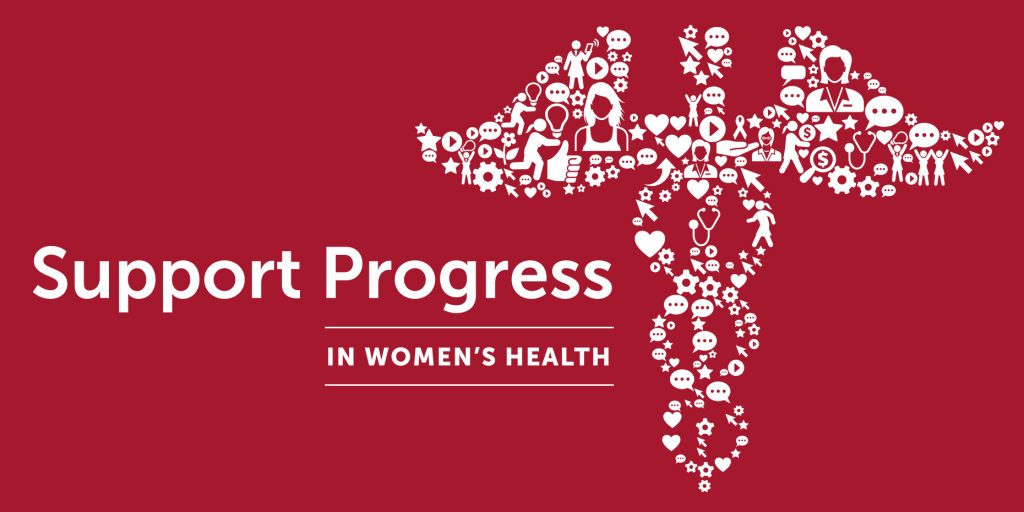Women’s Health: Beyond the Reproductive Zone
For Cathy K., a retiree of 74, women’s health was largely defined by gynecological care, until more recently when she began to experience bone density and other issues. “Now, it’s important to me to have a physician with a more holistic approach. Someone who understands things unique to women’s health.”


Women’s Health: Beyond the Reproductive Zone
March 18, 2021
.
For Cathy K., a retiree of 74, women’s health was largely defined by gynecological care, until more recently when she began to experience bone density and other issues. “Now, it’s important to me to have a physician with a more holistic approach. Someone who understands things unique to women’s health.”
Mary C., a mother approaching 59, still views women’s health as largely related to reproductive issues, though she also sees the need for guidance on preventive care for chronic conditions associated with middle age. Although she sees several doctors, she says it is her OB/GYN who is most involved. “I first saw him when I wanted to have kids in my forties,” she says. “I feel he knows me and can really understand me.”
Mary’s daughter, Katelyn C., is just about to turn 16. An active volleyball player, her primary concern is maintaining her physical fitness and staying injury free. While she actively seeks out health information on social media and the internet, her doctor has not discussed how female physiology may play into health, athletic performance, and risk of injury and recovery.

.
It’s been said that, “the health of women and girls determines the health of the modern world.”1 While this century has seen considerable progress in the areas of advocacy, research and policy relevant to women’s health, challenges remain – particularly in regards to bringing advances in women’s health to all women.
It was not until the 1990s that the concept of studying and practicing medicine with consideration for the differences between men and women began to gain traction. Although there had been considerable progress in women’s health in the preceding 90 years – contraception, pap smears, hormone replacement therapy and declines in maternal mortality -- the notion persisted that women’s health fell largely within the scope of reproductive care.
Eventually that mindset broadened within the profession, and today we know that sex can play a role in disease down to the molecular level. Research has established important links between diseases once thought to be gender neutral and female specific systems – as in the case of heart disease and its link to reproductive health. Studies have also shown that disease progression can differ between sexes.2
The prospects for women’s health received a significant boost in the early 1990s with the NIH Revitalization Act of 1993, which transformed clinical research. For the first time, research funded by the National Institutes of Health (NIH) was required to include women and minorities. Previously, the inclusion of women in clinical research was rare, and research was carried out almost exclusively on male animals.3
The Act also mandated that that clinical trials funded by the NIH be designed to address differences in research outcomes between women and men. Traditionally, analysis of outcomes had focused on male norms.
In 2001, the landmark report “Does Sex Matter?” issued by the Institute of Medicine addressed the fact that barriers persisted in research pertaining to women’s health. Authors concluded that, not only did sex matter, but that the study of how a person’s sex impacts health and disease had not gone far enough.4



.
The report outlined detailed recommendations intended to assess the medical considerations of sex in terms of human biology, behavior and health. Importantly, authors acknowledged that, “Sex differences of importance to health and human disease occur throughout the life span,” and called for the study of sex differences from “womb to tomb.”4
Since then, the recognition that women experience disease differently than men has driven a movement to better serve their health needs, both from a medical and a social perspective.
.
Physician and lay advocates continue to call for policies, programs and practices intended to ensure that women can access providers attuned to the social, environmental, biological, and economic factors that can affect a woman’s health throughout her lifetime.
Nevertheless, a 2020 report issued by the Commonwealth Fund “Transforming Primary Healthcare for Women – Part 1: A Framework for Addressing Gaps and Barriers” identified challenges that women continue to face despite advancements in research pertaining to women’s health:5
• Silos between reproductive health, maternal health and other specialties
• Lack of attention to differences in disease progression between men and women
• Lack of female physicians and an undersupply of women’s health specialists
• Politicization of women’s health
This suggests that while researchers and physicians may know more about the variability between male and female biology and the role sex plays in disease, awareness among patients and many of the physicians who treat them has yet to catch up.
In a 2013 TED Talk, Dr. Paula Johnson, a cardiologist and current President of Wellesley College, bemoaned the gap between research and its application in clinical care. “We have to ask the question, why leave women’s health to chance?” she said. “We know that every cell has a sex, we know that these differences are often overlooked and therefore we know that women are not getting the full benefit of modern science and medicine today. We have the tools, but we lack the collective will and momentum.” 6
She has suggested three simple questions that women can ask their providers in regards to diagnoses and treatments in order to initiate conversations regarding their health:
• Is this disease or treatment different in women?
• Is this the lowest possible dose for effective treatment?
• Do you consider sex in your approach to disease?
Throughout their lives women will experience a variety of health events that can encompass: preventive health, chronic health, emotional health, reproductive health, fertility, menopause, osteopathic health, diabetes, neurological health and palliative care. Authors of the Commonwealth Fund Report concluded that to maintain optimal health, women need access to a primary health care system that is prepared to deliver sex-specific and sex-aware care. Furthermore, providers must have skill in managing and coordinating care for an array of health experiences.7
To date, the drive to stimulate the collective will and momentum that Dr. Johnson spoke of has largely been fueled by advocates and public agencies. Progress has been made, but to further build awareness among patients of both sexes, providers must seek opportunities to build awareness and proactively discuss the ways in which sex may affect disease, treatment, recovery and prevention.
Footnotes:
1 Davidson, Patricia M, et al. “The Health of Women and Girls Determines the Health and Well-Being of Our Modern World: A White Paper From the International Council on Women’s Health Issues.” Health Care Women Int. Vol. 10, no. 3, Oct. 2011, pp. 870–886.
doi: 10.1080/07399332.2011.603872
2 Johnson, Paula A, et al. Sex Specific Medical Research Why Women’s Health Can’t Wait. Brigham and Women’s Hospital. 2014. https://www.brighamandwomens.org/assets/bwh/womens-health/pdfs/connorsreportfinal.pdf
3 Cutting Edge Topics in Women’s Health Part 1. Icahn School of Medicine at Mount Sinai. 2019. YouTube, uploaded by, Icahn School of Medicine, 28 March 2019, https://www.youtube.com/watch?v=v5wge-yKKOg
4 Exploring the Biological Contributions to Human Health: Does Sex Matter? Institute of Medicine. The National Academies Press. 2001.https://doi.org/10.17226/10028.
5 Zephyrin, Laurie, et al. Transforming Primary Healthcare for Women – Part 1: A Framework for Addressing Gaps and Barriers. The Commonwealth Fund. 16 Jul. 2020. https://www.commonwealthfund.org/publications/fund-reports/2020/jul/transforming-primary-health-care-women-part-1-framework
6 Johnson, Paula A. “His and hers…health care." TED: Ideas Worth Spreading. Dec 2013. https://www.ted.com/talks/paula_johnson_his_and_hers_health_care?language=en
7 Zephyrin, Laurie, et al. Transforming Primary Healthcare for Women – Part 1: A Framework for Addressing Gaps and Barriers. The Commonwealth Fund. 16 Jul. 2020. https://www.commonwealthfund.org/publications/fund-reports/2020/jul/transforming-primary-health-care-women-part-1-framework
Related Articles
Introducing the HemoCue Customer Portal
